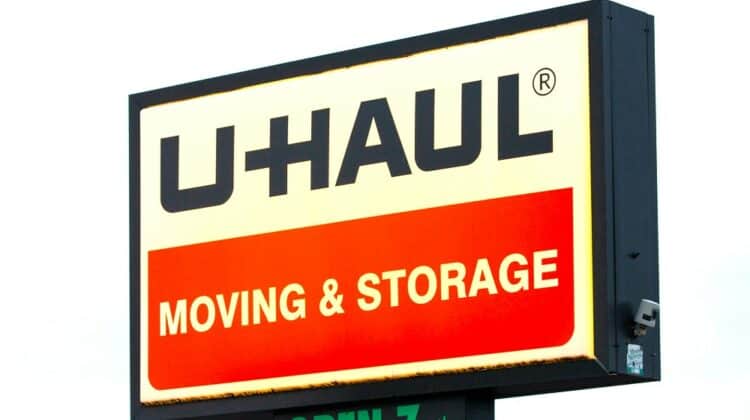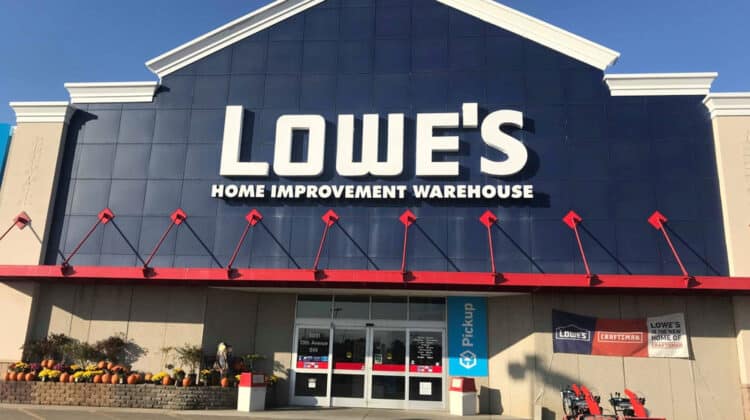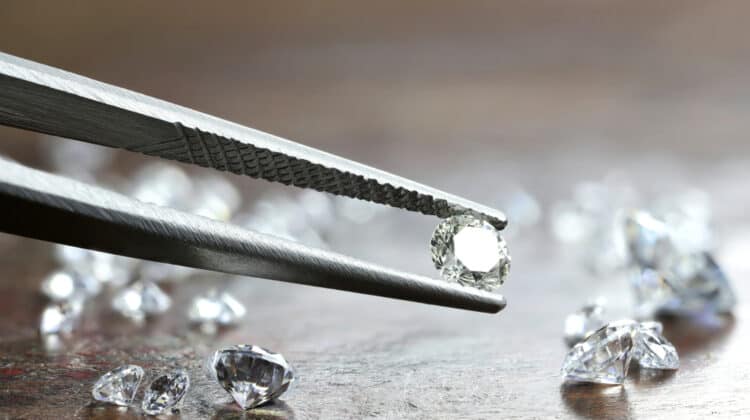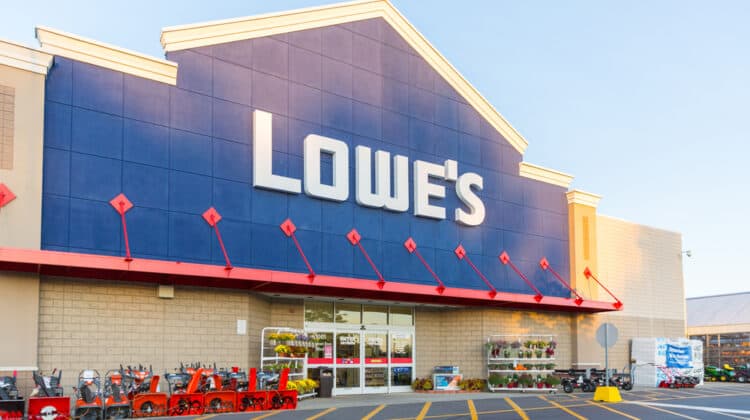
Volvo is one of the most well-known car brands throughout the world and has been in business for more than 100 years, since the 1920s.
While their reputation is known for being a high-quality and safe vehicle, they are also known for the high price tag associated with their luxury vehicle status.
Beyond the impressive exteriors of the vehicle models, it can be difficult to determine the exact interior and other details that make up the luxury brand.
Similarly, it can be difficult to visually determine at first glance why the vehicles are priced the way they are.
Why Are Volvos So Expensive? (10 Reasons It Is)
1. Luxury Vehicle Brand

Volvo is a luxury vehicle brand, with the majority of its vehicle models being shipped to the United States from Sweden.
In the United States, the S60 model is the only Volvo vehicle produced.
Some models are also manufactured in China and shipped to the United States.
Luxury cars are harder to come by.
Also, they are not necessarily marketed toward the average person on the street.
Many people consider luxury vehicles to be a status symbol, one of money and often power.
Therefore, in some ways, the higher purchase price is thought by many to be a way to control who can drive these luxury vehicles.
For example, if the average person could afford a Volvo, the brand might risk losing its luxury status.
There are many defining aspects of luxury cars.
The main one is that luxury vehicles are fully equipped with more than the basic or standard features of a car.
They provide the driver or passengers with a unique and luxurious driving experience, with comfortable seats and a spacious cabin.
Some Volvo models, like the 2020 S90, have additional luxury features like a laminated panoramic moonroof, soundproofing windows, and leather seats.
Volvo continuously strives to offer a better-than-average experience to its customers, including exceptional interior and exterior quality.
All of these luxury aspects come at a higher cost to manufacture and produce with top-of-the-line materials.
2. High Quality

Luxury vehicles require more expensive parts that are difficult to find or that must be purchased from a specific retailer.
While the parts are costly, overall, the vehicles are manufactured to be highly reliable.
Volvo models are not known for sudden, unexpected breakdowns that require exorbitant repair costs.
They are reliable, and if taken care of properly, they can be expected to have a long lifespan.
They strive to offer the best quality air filters, batteries, brakes, cabin air filters, oil filters, timing belts, windshields, wiper blades, and more.
The site also gives an estimated timeline of when these parts should be replaced for maximum efficiency and the lifespan of your vehicle.
It is costly to purchase and replace parts to keep your vehicle running smoothly, however, prevention is key to avoiding a more disastrous and pricey repair down the road.
3. Safety Is A Main Priority

On par with reliability, is safety.
Volvo is primarily a Swedish-built vehicle, and top-of-the-line safety is one aspect that the Swedish value above all.
A not-so-commonly known safety feature of Volvo vehicles is that there are strategically placed weak sacrificial structures built throughout the vehicle.
These are structures specifically designed to buckle or break down during a collision which actually aid in protecting the vehicle and those within from a more serious injury.
Some online reviews report that this safety feature was not disclosed to them, rather they discovered it through their own investigation of their vehicle.
Additionally, most Volvos were manufactured with off-road capabilities.
All-wheel drive systems were put in place to better protect the driver during inclement weather conditions, like snow, rain, and fog.
Their vehicles were manufactured to have the best quality traction available.
Other standard safety features existing in all current Volvo models include:
- Rear-view facing backup cameras
- Lane-keeping assist
- Blind spot warning
- Emergency brake assist
- Adaptive cruise control
- Pilot assist
4. Software Programs And Updates

The more updated and current Volvo models require specific software to run the car.
To access and use these software programs, the company that produces, maintains, and installs the software charges a higher rate for service.
Additionally, the vehicle’s software can be updated regularly online or at Volvo Retailer.
These software updates include fixes to reported issues, like key fob deficiencies.
Other updates include Apple CarPlay, traffic sign alerts, wireless charging, and more.
The disadvantage and costly part of these specialty software programs is that, when the vehicle has a malfunction, there are few options for dealerships or repair shops with the expertise to solve that issue.
Additionally, as you’ll see in the next point, the software needed to fix these issues must first be purchased by the repair shop at an extremely high cost.
5. Additional Cost Associated with Shipping a New Vehicle Overseas

Another expense often overlooked when considering purchasing a new vehicle is the shipping costs associated with transporting it internationally.
Depending on the Volvo model purchased, your new vehicle may potentially be shipping from China or Sweden.
The biggest factor of shipping a vehicle which impacts the price, is usually the vehicle size.
For example, a larger vehicle such as a SUV takes up more space on a carrier than a smaller sedan.
Shipping carriers have a total weight limit they cannot exceed.
Larger vehicles, heavier weight and greater space required, impact the amount of other vehicles that can be shipped at the same time.
Another factor to consider when shipping a vehicle overseas is the customs clearance services.
Every country has different laws which impact what type of vehicles can be imported or exported.
According to the U.S. Customs and Border Protection, foreign-made vehicles that are imported to the United States incur a dutiable entry rate of 2.5% (auto) or 25% (trucks) which must be paid.
Additionally, in order for U.S. customs to accept a vehicle’s admittance from an international company the vehicle must meet U.S. emission and safety requirements.
Luckily, since Volvo is a regular exporter to the U.S. the company follows these emissions and safety requirements.
Although, this does increase the price of the vehicle to ensure that all requirements are regularly kept up to date with changing laws and regulations.
There are other federal taxes that imported vehicles may incur.
For example, section 4064 of the internal Revenue Code applied certain imported automotives to incur the gas-guzzler tax.
This tax is determined based on the urban or highway fuel economy rating of the vehicle.
6. Finding Certified Local Repair Shops Is Difficult

Any car owner, whether a Toyota, Subaru, or Honda, can tell you that taking your vehicle to a dealership will lead to much higher costs than receiving the same service at a local repair shop.
The issue many luxury vehicles, including Volvo, experience is that the amount of local repair shops with the knowledge and experience of luxury cars is limited.
These repair shops require their servicemen to be specialized in the specific brand of car.
These specializations and certifications in international luxury brands are expensive for repair shops with limited funds and resources to obtain.
However, if you are willing to do the research, it may be worth it to find a repair shop with the specializations necessary to care for your Volvo.
It is likely the maintenance expenses will still be higher than the same service for a Toyota, due to the higher cost of parts and knowledge required of the service technician.
7. Warranty Specifications

Another important thing to note is that having your Volvo serviced at a repair shop other than the dealer may cause the warranty on the vehicle to be automatically voided.
This is particularly true if you are adding on other services like window tinting or engine starters.
Failing to recognize this may result in future issues if the local repair shop is unable to fix a necessary repair, the dealership may decline to conduct service on the vehicle or will charge even higher due to the voided warranty.
Volvo, like many popular vehicle brands, offers a Factory-Scheduled Maintenance (FSM) program as a complimentary service after the purchase.
However, only authorized Volvo dealers can perform these services while under the warranty.
To determine what warranty your vehicle falls under, enter the year and model for your vehicle on the customer help website.
This Factory-Scheduled Maintenance program provides each Volvo manufactured vehicle with three complimentary services for the first three years or up to 36,000 miles.
After using up those three complimentary maintenance services, the owner then has the option of purchasing a Prepaid Maintenance Plan.
This plan saves them up to 20% of normal maintenance costs.
The coverage level for this Prepaid plan is dependent on the model of the Volvo.
Additionally, Volvo launched its Customer Lifetime Parts & Labor Warranty in June 2015.
This warranty is available to customers who purchase an eligible part and install it at an authorized dealer.
This warranty allows customers to pay for a repair just once, and then never again.
Certain items are not included in this warranty, and Volvo recommends verifying if a part is eligible on their site or by calling their customer service line.
8. Turbocharged Engine

Within the current model lineup, all Volvo models either come equipped with a turbocharged engine or have the option available to add it in with purchase.
The main advantage of a turbocharged engine is that it boosts the power and overall performance of the engine.
The second advantage is that they have a similar fuel economy and release the same amount of emissions as a naturally aspirated engine that is the same size.
Also advantageous of this type of engine is that a larger naturally aspirated engine produces similar amounts of power as a turbocharged engine.
However, the main difference is that the larger naturally aspirated engine receives a lower mile per gallon fuel economy and releases more pollution than the turbocharged engine.
Volvo is dedicated to improving its carbon footprint and aspires to be more environmentally friendly, the advancements made with its turbocharged engines are just one way they are working towards these goals.
9. Cost Of Insurance Premium

In general, it can be expected that most sports cars and higher-end or luxury vehicles are likely to cost more in an annual insurance premium.
Insurance premiums increase due to the expense of repairs should your vehicle be damaged and an insurance claim is filed.
When customers think of damages requiring repair, we are typically thinking of more internal or engine damages as well as of the bigger ticket exterior pieces, such as replacing the hood or bumper of a vehicle.
However, one very pricey item that is often forgotten about is the finish of the vehicle.
The paint and finish used on Volvos in particular are much more expensive than the finish on a typical Subaru or Toyota which are considered more moderately priced vehicles.
Volvo does offer short-term insurance called Marine Insurance.
This provides coverage for your vehicle during the shipping process from overseas to the United States.
The company also offers Volvia insurance for an extra cost, this plan provides coverage while the owner drives abroad for more than two weeks on cars that are registered temporarily with Swedish export plates.
Neither of these insurances can replace the typical insurance used for everyday accidents and necessary repairs.
10. Elegant Designs

As we have mentioned above, Volvo exceeds expectations in safety, practicality, and reliability which all play a role in the expensive prices of its models.
However, one area that should not be left out is the elegant designs, inspired by Swedish elegance.
Many reviews say that luxury vehicles have the same boring designs.
However, Volvo vehicles can be described as the quintessential Swedish elegance that no other brand of vehicle has been able to adopt as successfully.
The design allows their vehicles to stand out in a crowd, even if they are not the most expensive vehicle around.
Volvo describes its Scandinavian and Nordic-inspired designs as “simple, light, and airy.”
Volvo’s 2005 Creative Director, Jose Diaz de la Vega, was the visionary behind the interiors of Volvo.
He was a man who had seen the world and incorporated holistic views and cultural experiences in his designs.
Jose describes Sweden, the home of Volvo, as being the home of melancholy.
This melancholy can be described as elegant simplicity and functionality combined to provide character to everyday life and objects within the country.
The inspiration that the creative team at Volvo gathered, came from the scarce daylight hours in Sweden.
This inspired the use of lighter materials, like the birch, willow, and juniper trees that are abundant in the country.
Additionally, Sweden’s stone symbol is granite, and Volvo draws inspiration from that with its polished steel and untanned leather.
In general, Jose’s creative inspiration comes from the outdoor world.
The materials and designs of Volvo purposely do not include any extra ornamentation or unnecessary features.
The company prides itself on its craftsmanship, with respect for both the materials and future users of the vehicle.
The company has succeeded in incorporating Scandinavian designs and thinking, into a high-end luxury vehicle admired by all.
NEXT: Why Are Car Parts So Expensive? (10 Reasons)























